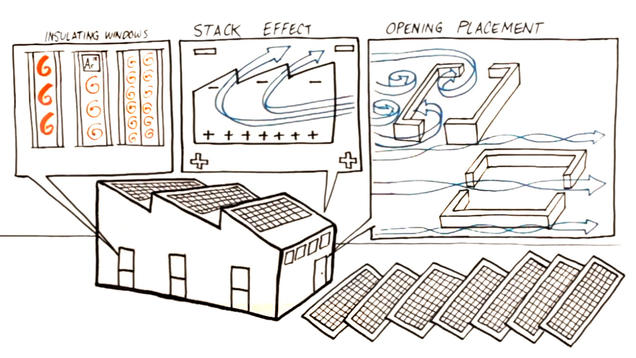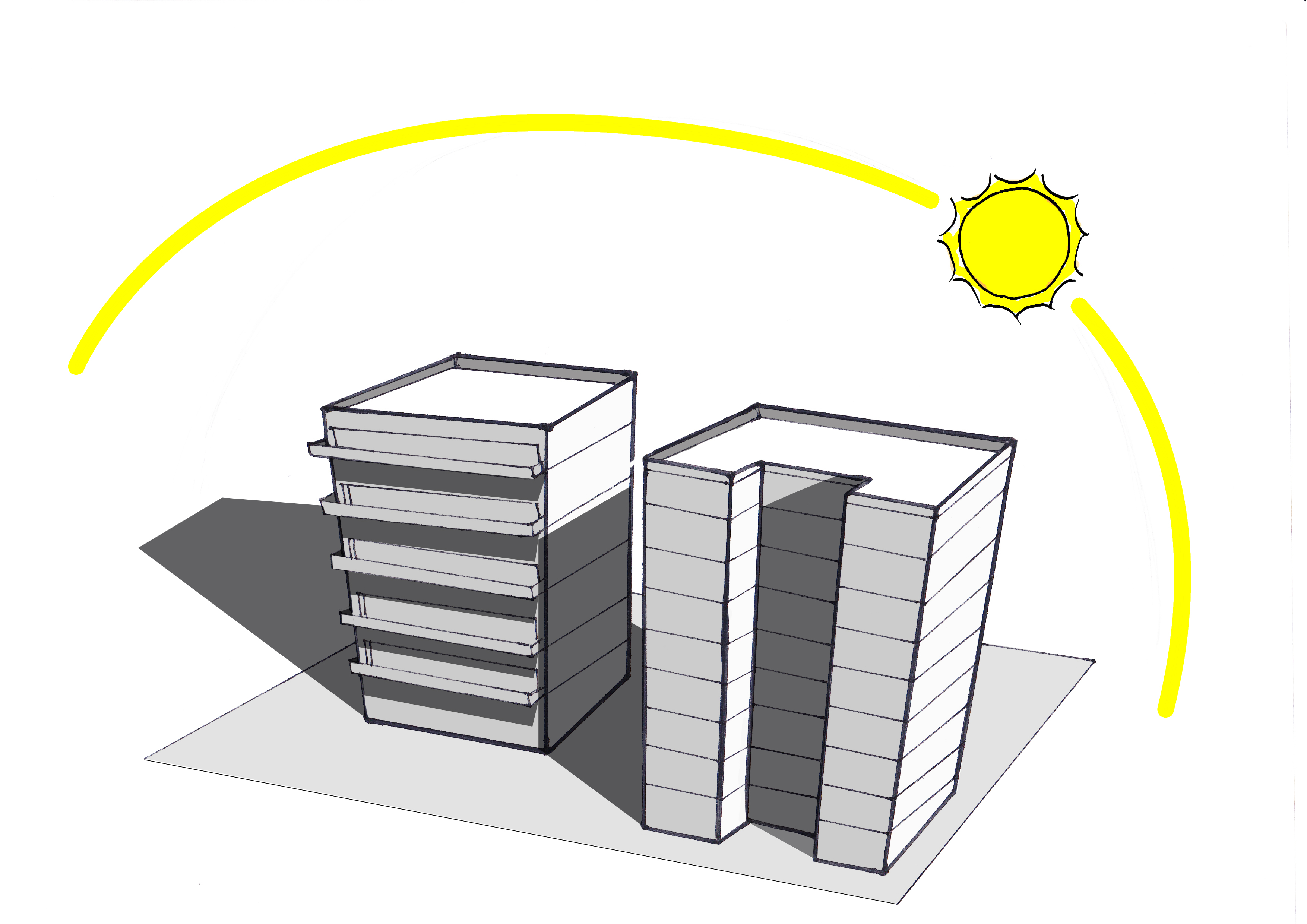You are here
To keep people comfortable you’ll need to use the right combination of passive and active design strategies. High-performance buildings use the right blend of passive and active design strategies to minimize energy, materials, water, and land use.
Passive design strategies use ambient energy sources instead of purchased energy like electricity or natural gas. These strategies include daylighting, natural ventilation, and solar energy.
Active design strategies use purchased energy to keep the building comfortable. These strategies include forced-air HVAC systems, heat pumps, radiant panels or chilled beams, and electric lights.
Hybrid systems use some mechanical energy to enhance the use of ambient energy sources. These strategies include heat recovery ventilation, economizer ventilation, solar thermal systems, radiant facades and even ground source heat pumps might be included in this category.
In general, you’ll want to optimize your design for passive strategies first. Doing so can often downsize the active systems you’ll need to install.
Consider the analogy of a sailboat, which uses natural forces to propel a boat through water. Similarly, you can ‘sail’ your building and keep its occupants comfortable by using passive design strategies for heating, cooling and ventilation.
Understanding how to design for human comfort will help you pick the right passive design strategies.
Dive Deeper
Building Massing & Orientation
Massing and orientation are important design factors to consider for visual comfort, or daylighting. Many of the strategies are similar to those for passive heating, but also different factors, such as glare, to consider.Passive Heating
Passive heating uses the energy of the sun to keep occupants comfortable without the use of mechanical systems. These concepts will help you design for passive heating.Passive Cooling
Just like passive heating, cooling your building using passive strategies is important for reducing energy usage in your building. Specifically, utilizing passive cooling strategies like natural ventilation, air cooling, and shades can reduce your demand for mechanical cooling while maintaining thermal comfort.Lighting and Daylighting Design
Getting smart about lighting is an important step to designing energy efficient buildings. Learn how to use daylighting, achieve proper light quality, and provide good controls to reduce energy demands and make people happier. The sun is predictable and daylight can be a very reliable source of light. Sunlight, views, and daylight are different though, and need to be carefully managed.Links and References
- Building Science helps you understand how to harness both passive and active systems to create efficient buildings.
- Nice set of calculators to help with passive design .
- Holistic design guidance to achieve 30-50% energy efficiency gains on a variety of building types.



